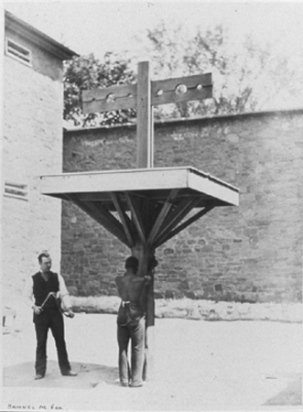The Sugar Factory, the secret punishment ground in the dark history of slavery. Before the American revolution that lasted between 1765 and 1783, the production of sugar into cubes which was by then known as sugar loaves had fast become a very lucrative business thanks to its high demand and production from sugar plantations where enslaved Africans largely worked.
On what is now known as Logan and Magazine Streets in Charleston, South Carolina, a popular sugar factory built by Mr Columbus C. Trumbone produced sugar loaves (cubed sugar) but was later turned into a sugar cane and processed sugar warehouse.
The Sugar Factory in Charleston would later become a building with an ambiguous name deeply rooted in the dark and painful history of African Americans.

South Carolina had many plantations making several people in Charleston own several enslaved Africans who worked either on their plantations or in their homes.
At the turn of the 18th century, the term sugar had become popular among white owners and their slaves to mean a severe punishment meted out to slaves that caused much pain, damage and several days of weakness. A sugared slave was one who had been weakened or bed ridden after several lashes or hits to the body.
By 1775, during the civil war, the popular sugar factory which became known as the Sugar House in Charleston had since become a sugar warehouse with several rooms that led one underground. These secret rooms in the factory that were not easy to locate by just anybody had become the punishment rooms for runaway and stubborn slaves who according to their owners deserved to be sugared.
According to several accounts, the factory had become a workhouse jail for several white criminals, pirates and civil war prisoners but after a few years, had become more popular as a jail sugar house for slaves and black criminals. Many are believed to have died there.

The sugar factory has been mentioned in several articles and books published from the journals and accounts of enslaved folks who heard about it or experienced time in the dark rooms of the factory.
A vivid account is given in one such account from the Recollections of a Runaway Slave, James Mathew, who is identified as the writer of the account; a slave who ran away from his plantation and was later sent to the Sugar House after being found.
“I have heard a great deal said about hell, and wicked places, but I don’t think there is any worse hell than that Sugar House. It’s as bad a place as can be. In getting to it you have to go through a gate, in a very high brick wall. On the top of the wall, both sides of the gate, there are sharp pointed iron bars sticking up, and all along the rest of the wall are broken glass bottles. These are to keep us from climbing over. After you get into the yard, you go through a gate into the entry, then through a door of wood and an iron door, chained and locked together, so as both to open at the same time. The lower story is built of stone of great thickness,–and above, brick. The building is sealed inside with plank. Away down in the ground, under the house is a dungeon, very cold and so dark you can’t tell the difference between day and night. There are six or seven long rooms, and six little cells above and six below. The room to do the whipping in is by itself. When you get in there, every way you look you can see paddles, and whips, and cowskins, and bluejays, and cat-o’-nine tails. The bluejay has two lashes, very heavy and full of knots. It is the worst thing to whip with of anything they have. It makes a hole where it strikes, and when they have done it will be all bloody.
In the middle of the floor are two big sills, with rings in them, fastened to staples. There are ropes tied to the rings to bind your feet. Over the sills is a windlass, with a rope coming down to fasten your hands to. This rope leads off to the corner of the room, and there are pegs there to tie it to, after they have got you stretched. Slaves are carried there to be whipped by the people in the country four or five miles round, and by all the people in the city, and the guard men carry there all the runaways they take up.”

Several other accounts such as The Second Mrs Hockaday, a historical novel by Susan Rivers and Janie Mitchell, Reliable Cook-An Ex Slave’s Recipe for Living, 1862-1931″ give harrowing details about what happened in the Sugar House.
Slaves were brought to be whipped not less than 20 or 30 times depending on the request of the owner and several slaves often begged for forgiveness to escape the close to death experience at the Sugar House.

After a while, slaves were left to either die or remain in the Sugar House due to the fact that they were of no use after the punishments they went
Today, the Sugar House is largely unknown because the building was long pulled down. But its truth lies in the several accounts of African Americans whose journals managed to be retrieved and published.










